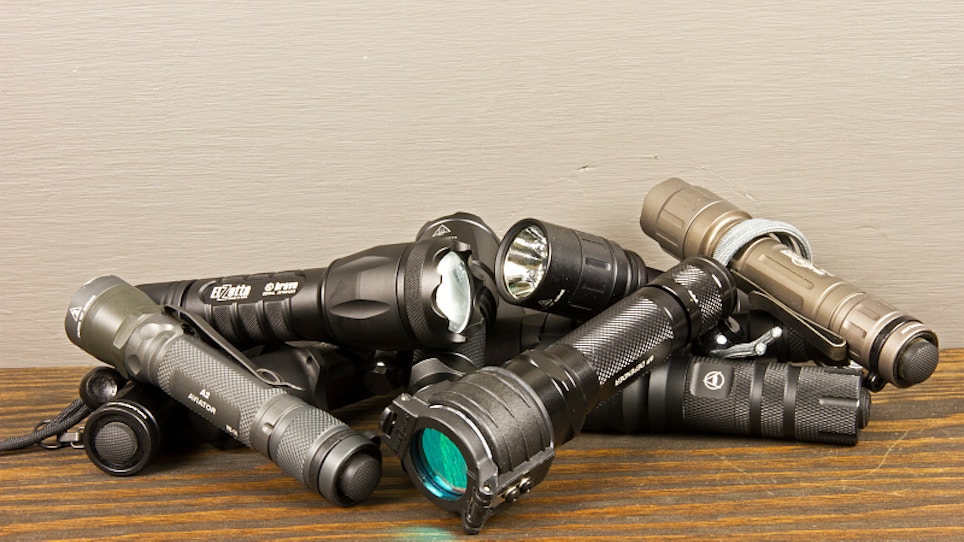Selecting the right tactical light can be confusing, but breaking the process down into simple steps, as recommended by Elzetta’s CEO Dave Barnett, makes it easier. Using his recommendations as a framework, here is a way to make the selection process less intimidating.
Start by asking what the customer intends to use the light for. Obviously, if they want to spot critters at long distances, they will need a light with a longer range than if they want a light to identify threats inside a house.
Once the range is determined, check the light’s FL1 Standard listing that most manufacturers provide, and look for lights with distance ratings twice that. Although the light’s beam might reach to the FL1 listed distance, the amount of light will be too little to see details.
Inside dwellings, 20 yards is about the longest range a user might encounter, so the light should generally have a range of about 40 yards. The longer the range rating, the more intense the beam. Looking for a light with a range that is much longer could be detrimental in a confined area, the light might be so intense that details are washed out and the user sees only reflected white light that degrades his own night-adapted vision.
The goal is to select a light that throws a beam far enough for the needed range while casting a smooth, even light over the largest area possible, while not hindering peripheral vision. With that in mind, make sure coverage is smooth, uniform and as wide as possible.
If the light is to be used in outside environments, it might be tough to see threats located outside of a hard-edged beam, but in an enclosed structure, light bounced off floors, walls and ceilings penetrates beyond the edge and tends to offset hard-edged beam deficiencies.
Does the customer want a weapon-mounted or hand-held light? Remember the hand-held light can also serve as a weapon-mounted using a suitable mount. Consider the size and shape of the light, because if a hand-held light is too small, it will be hard to manipulate — especially under pressure. When mounted on a weapon, lighter and smaller is often the better choice.
For tactical applications, switches are a major consideration. Simpler is better because toggling through various options under stress to get a steady bright beam instead of a strobe or dim navigational beam causes confusion and takes time and can get a person killed.
Last, consider run time and power source. While rechargeable batteries generally save money in the long run, the initial cost is greater. With newer power management features, the old problem of rechargeable batteries running out of power without warning is disappearing, but it is a consideration if the light does not have the proper circuitry to signal an imminent loss of power. The other problem is that recharging batteries takes time. Standard batteries, on the other hand, are less expensive initially and are easy to replace.
Higher lumens or candela ratings and special features like strobe and SOS signaling mode might look good in the showroom, but in the real world of tactical operations they can be useless and even cost lives.






